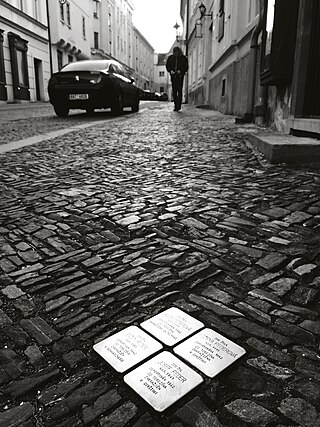Self-guided Sightseeing Tour #9 in Halle (Saale), Germany
Legend
Tour Facts
2.5 km
42 m
Experience Halle (Saale) in Germany in a whole new way with our free self-guided sightseeing tour. This site not only offers you practical information and insider tips, but also a rich variety of activities and sights you shouldn't miss. Whether you love art and culture, want to explore historical sites or simply want to experience the vibrant atmosphere of a lively city - you'll find everything you need for your personal adventure here.
Individual Sights in Halle (Saale)Sight 1: Albert Müller
A Stolperstein is a ten-centimetre (3.9 in) concrete cube bearing a brass plate inscribed with the name and life dates of victims of Nazi extermination or persecution. Literally, it means 'stumbling stone' and metaphorically 'stumbling block'.
Sight 2: Eduard Oppenheim
The list of stumbling stones in Halle (Saale) contains all stumbling stones that were laid in Halle (Saale) as part of the art project of the same name by Gunter Demnig. They are intended to commemorate victims of National Socialism who lived and worked in Halle. By May 2024, a total of 288 stones had been laid at 131 addresses; further stones are being planned.
Sight 3: Landesmuseum für Vorgeschichte
_Landesmuseum-für-Vorgeschichte.jpg)
The State Museum of Prehistory in Halle (Saale) is the archaeological museum of the German state of Saxony-Anhalt.
Wikipedia: Halle State Museum of Prehistory (EN), Website, Url
Sight 4: St. Norbert
Sankt Norbert is a Roman Catholic church in Halle (Saale) in Saxony-Anhalt, which was built in 1890–1891 in the neo-Gothic style in the then still independent village of Giebichenstein and is a listed building. It is listed in the register of monuments of the city of Halle under the registration number 094 05073.
Sight 5: Zoologischer Garten
_Zoologischer-Garten.png)
Halle Zoo, also known as Halle Mountain Zoo, was established in 1901 on the 130-metre-high Reilsberg in the north of Halle (Saale) in the Giebichenstein district. With a total area of nine hectares, it is one of the smaller zoos. However, due to its structure in several levels around the mountain, the terrain appears much larger than it actually is.
Share
How likely are you to recommend us?
Disclaimer Please be aware of your surroundings and do not enter private property. We are not liable for any damages that occur during the tours.
GPX-Download For navigation apps and GPS devices you can download the tour as a GPX file.

_Eduard-Oppenheim.jpg)
_St.-Norbert.jpg)